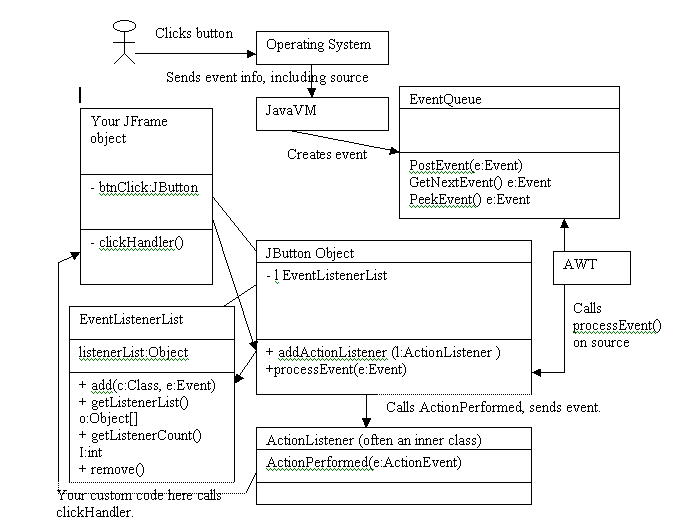- It fetches events from the event queue, likely via getNextEvent(). Again, this is encapsulated functionality, but we can make assumptions...
- It calls the processEvent() method of the event source. This method dispatches the event to the event listeners..
- It invokes the listener method for that event.
- The event queue can combine events, especially frequenty occurring events, or events that duplicate other events.
- The event source, a JButton object, for instance, has a big role in this process.
- Its processEvent() method is in charge of taking the event from the JVM and dispatching it to the listeners.
- How does it know what the listeners are? It maintains an EventListenerList object of listeners. Listeners are added via an addXxxListener() method on the source. The source then adds the listener to its EventListenerList.
- When processEvent() is called, it gets all necessary listeners from the EventListenerList and sends them the Event object.
- A listener is an object with a method that accepts Event objects. This method is fired from the processEvent() method of the event source.
- The bottom line is, this is where the logic goes when the event happens. This is where you place any logic that you want to perform when the event happens.
- Often, all this listener does is call a method on the event source object itself. Thus, listeners are often internal classes so that they can directly call methods on the source.
- You can have 0 - many listeners per event. You can even re-use listeners on different sources.

So what do I have to do?


